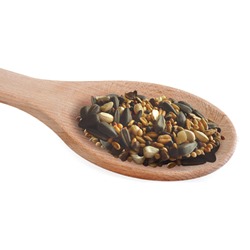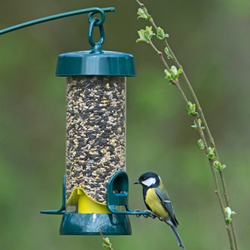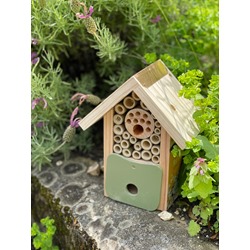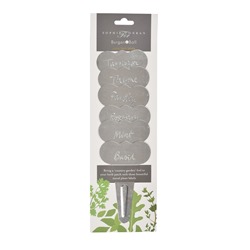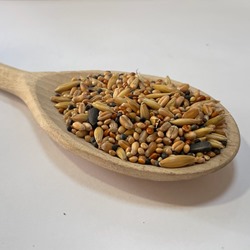This year, for the first time in about 5 or 6 years, we have a flock of Golden Plover back on the farm, which is really lovely to see. They are enjoying our over-wintered stubble fields, where they can get stuck into all sorts of worms and invertebrates, and they are also enjoying our grass seed, wild bird cover seed and hedgerow berries. As I am writing this, I am wondering whether the plural is 'plover' or plovers'? One sounds right, the other looks right...need to consult the dictionary!
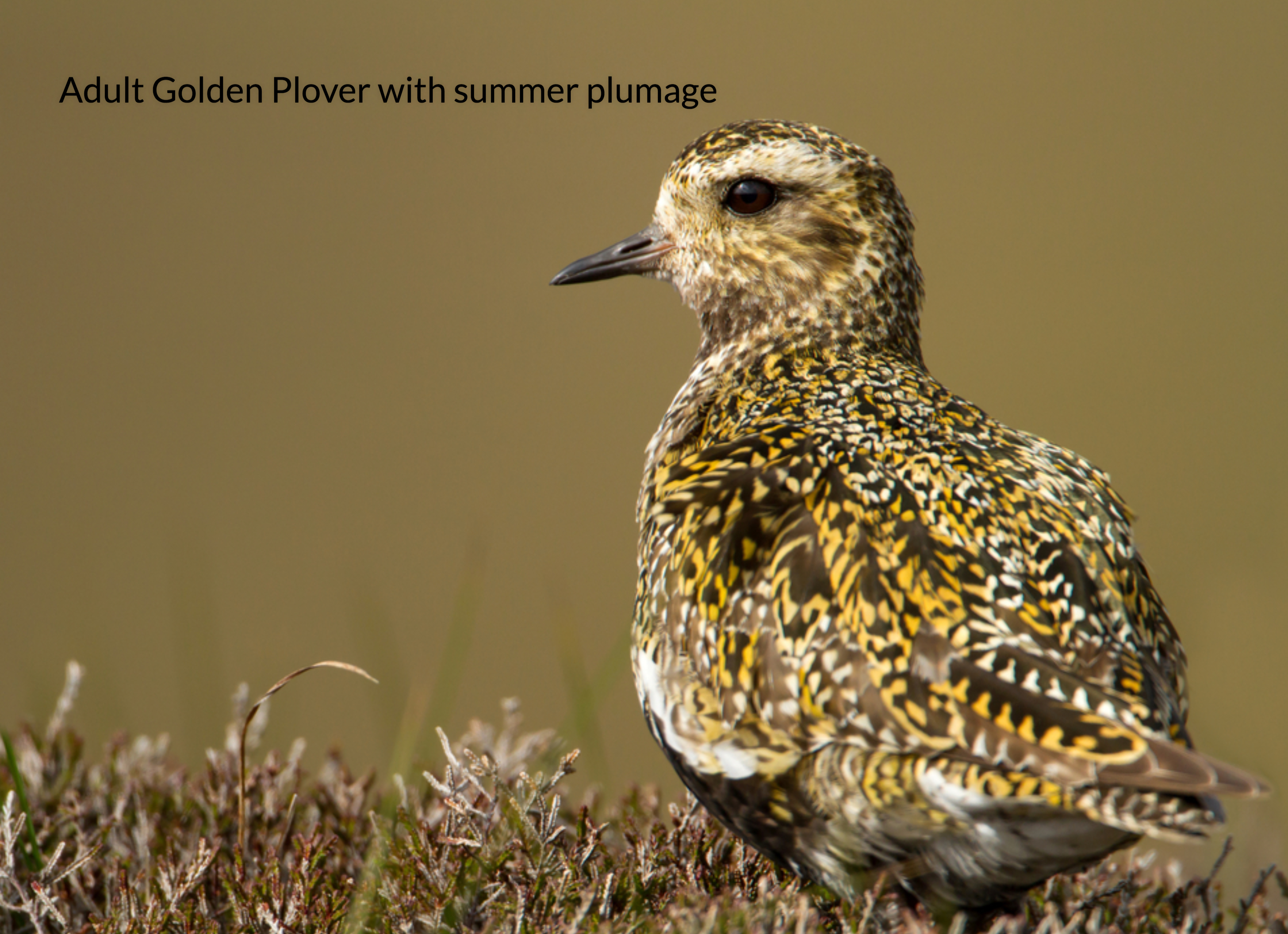
These birds have probably flown south for the winter, most likely from Northern Scotland, the Highlands and Islands, but possibly as far away as Iceland and far Northern Europe. Wherever they came from, they are certainly enjoying themselves now! Very often plover(s) and lapwings will co-exist , since they are both wading birds who prefer the same type of grassland. Sadly we haven't seen any lapwings on the farm this year.
Scotland is home to the core of the UK’s breeding population of Golden Plover, with the highest numbers found in the Outer Hebrides, Shetland, Caithness and Sutherland, but it is estimated that numbers have declined by a drastic 25% between 1995 and 2014 ( according to the BBS - Breeding Bird Survey). The BBS is the main scheme for monitoring the population changes of common breeding birds in the UK and its constituent countries, using counts made by volunteer birdwatchers. The numbers of other wading birds such as curlew, lapwing and oystercatcher have also declined dramatically over the last 20 years and securing the future of these wader populations is one of Scotland’s biggest bird conservation challenges.
These birds are particularly vulnerable to climate change because their breeeding success depends greatly on the availability of craneflies during May and June. The survival of golden plover chicks is directly related to the availability and abundance of craneflies, so if we have a hot, dry summer, where moorland and preferred grassland dries out, cranefly larvae are dessicated. This means that the following year there will be a shortage of adult craneflies for the chicks, which jeopardises their survival. It follows logically therefore that if we can find ways of preventing the land drying out in the summer months, cranefly numbers will rise - good news for the plover chicks!
One of the other significant challenges these birds face is displacement by wind farms. As I am sure you can imagine, the North of Scotland is a windy place and a large number of wind farms now grace the landscape. Golden plover breed in open landscapes and it is possible ( although not totally proven) that the presence of wind turbines may put them off breeding. There are many ongoing studies by a variety of organisations looking at the total effect of wind farms on the survival of these birds, both short and long term.
The golden plover is a medium sized wading bird with golden speckled feathers on its back. It has a characteristic 'barrel' body shape - quite 'dumpy' and its white 'armpits' ,which are very obvious in flight, are usually a bit of a give-away as to its identity!

During the breeding season (spring and summer) adults turn black on their belly and neck. They are ground nesters, prefering open moorland where they can see approaching predators. The female usually lay about 4 eggs in April/May time, and the Dads help with the childcare!
Large areas of UK moorland have now been designated 'Special Protection Areas' where the focus is on managing the land in a way which will encourage the breeding success of these wonderful birds. In fact, there is now an annual Scottish ''Golden Plover Award', open to estates, farmers and individuals who have worked to create sustainable moorland management. The winner is presented with a limited edition print of a golden plover by celebrated Scottish artist Colin Woolf. Have a look at his website - his art is stunning!
Here's hoping that with a bit of help regarding land management, these birds will have a golden future.
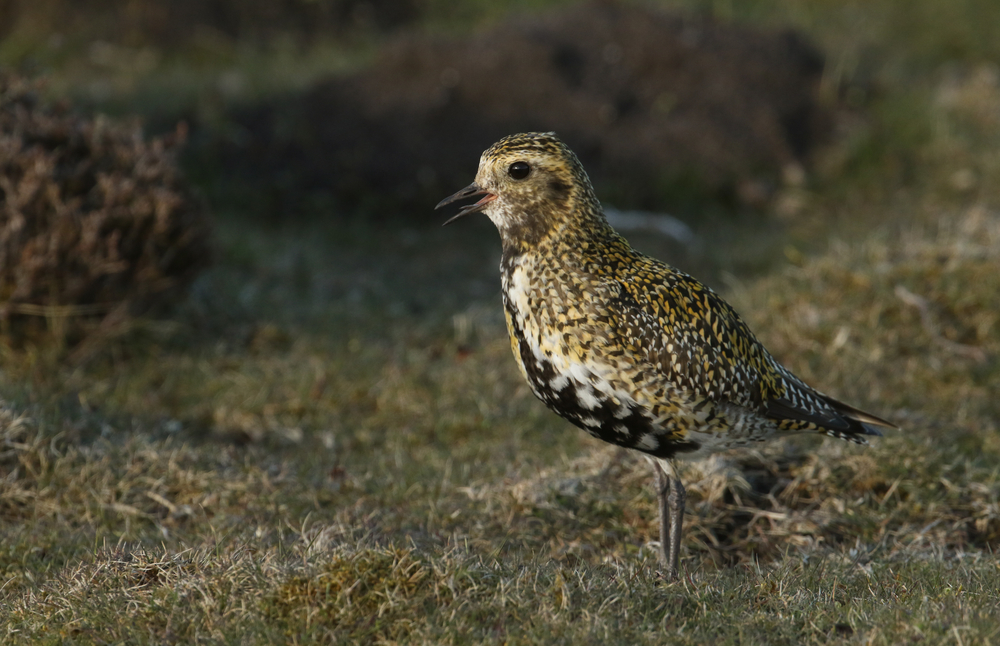
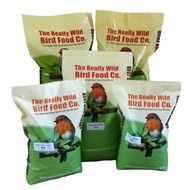 Back
Back Bird Foods
Bird Foods  Seed Mixes
Seed Mixes Straight Seeds
Straight Seeds Mealworms & Worms
Mealworms & Worms Chicken Feed
Chicken Feed Duck Food
Duck Food Peanuts & Peanut Butter
Peanuts & Peanut Butter Suet & Fat Balls
Suet & Fat Balls No Mess Bird Seed
No Mess Bird Seed  Wheat Free Bird Seed
Wheat Free Bird Seed Sunflower Seeds
Sunflower Seeds Softbill Bird Food
Softbill Bird Food Bulk Bird Seed
Bulk Bird Seed Trial Packs
Trial Packs Pick & Mix
Pick & Mix Mini Pick & Mix
Mini Pick & Mix Birdie Basics: Budget Bird Food
Birdie Basics: Budget Bird Food Food for Small Birds
Food for Small Birds Back
Back Bird Feeders
Bird Feeders  Seed Feeders
Seed Feeders Peanut Feeders
Peanut Feeders Peanut Butter Feeders
Peanut Butter Feeders Suet & Fat Feeders
Suet & Fat Feeders Window Feeders
Window Feeders Hanging Feeders
Hanging Feeders Feeding Stations
Feeding Stations Ground Feeders
Ground Feeders Easy Clean Feeders
Easy Clean Feeders Bird Tables
Bird Tables Seed Trays
Seed Trays Bird Baths & Drinkers
Bird Baths & Drinkers Feeder Accessories
Feeder Accessories Feeder Hygiene
Feeder Hygiene Squirrel Proof Bird Feeders
Squirrel Proof Bird Feeders For the Kids
For the Kids Niger Seed Feeders
Niger Seed Feeders Mealworm Feeders
Mealworm Feeders Bird Food Storage
Bird Food Storage Fat Ball Feeders
Fat Ball Feeders Tube Feeders
Tube Feeders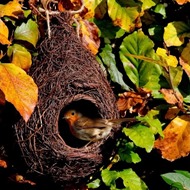

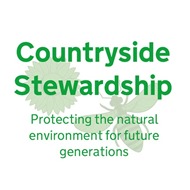

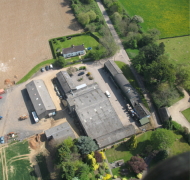 Our Farm
Our Farm  Tips & Advice
Tips & AdviceContact Us

